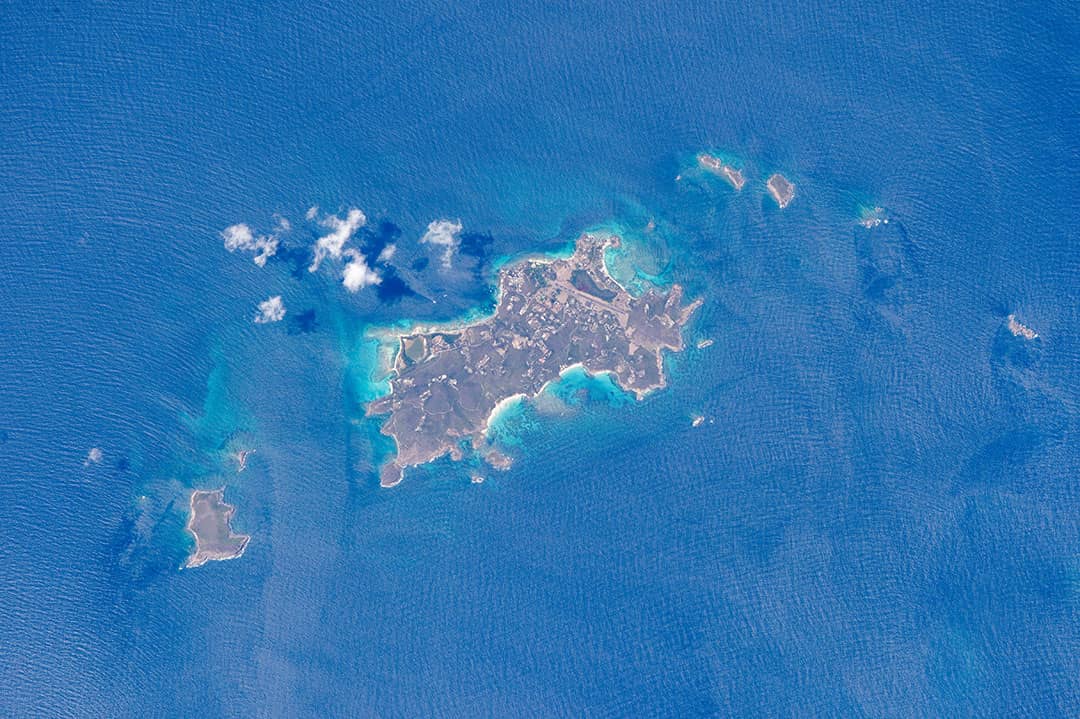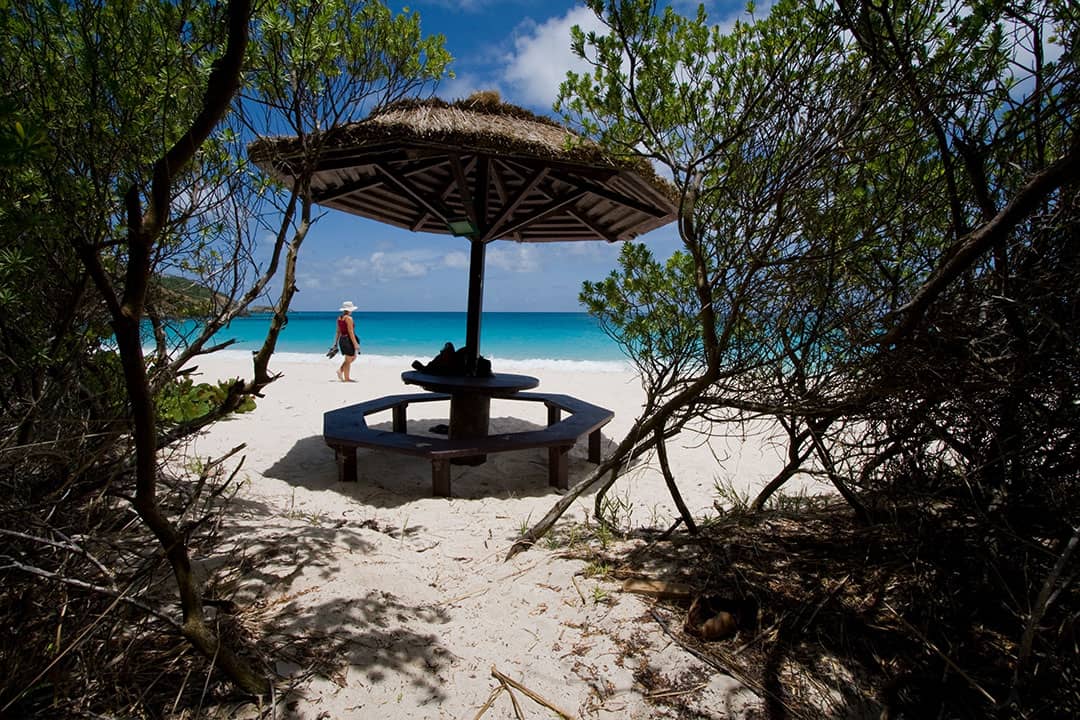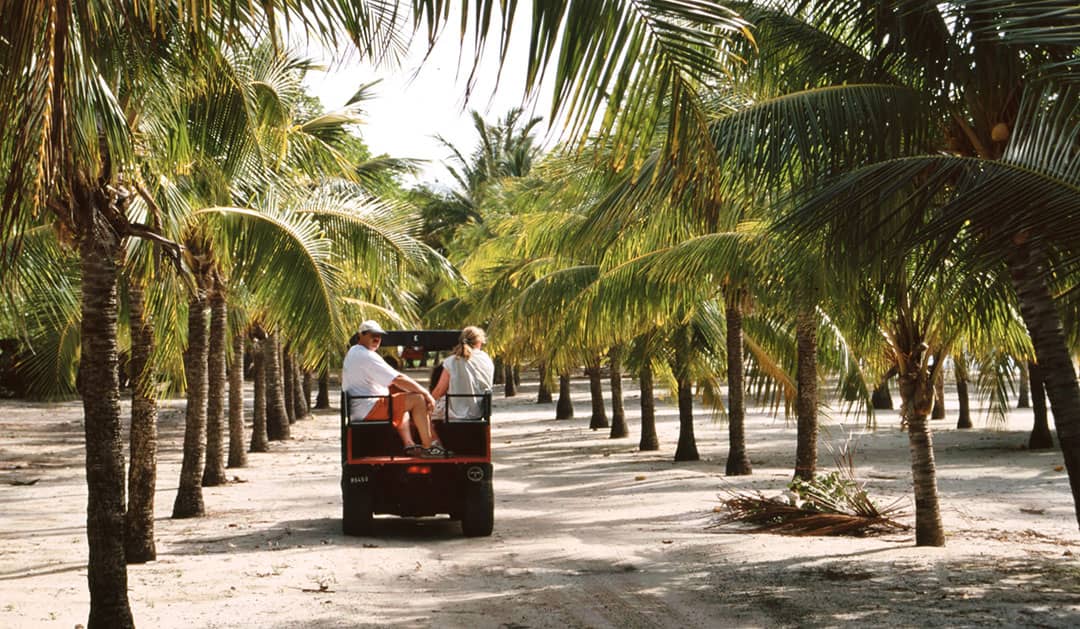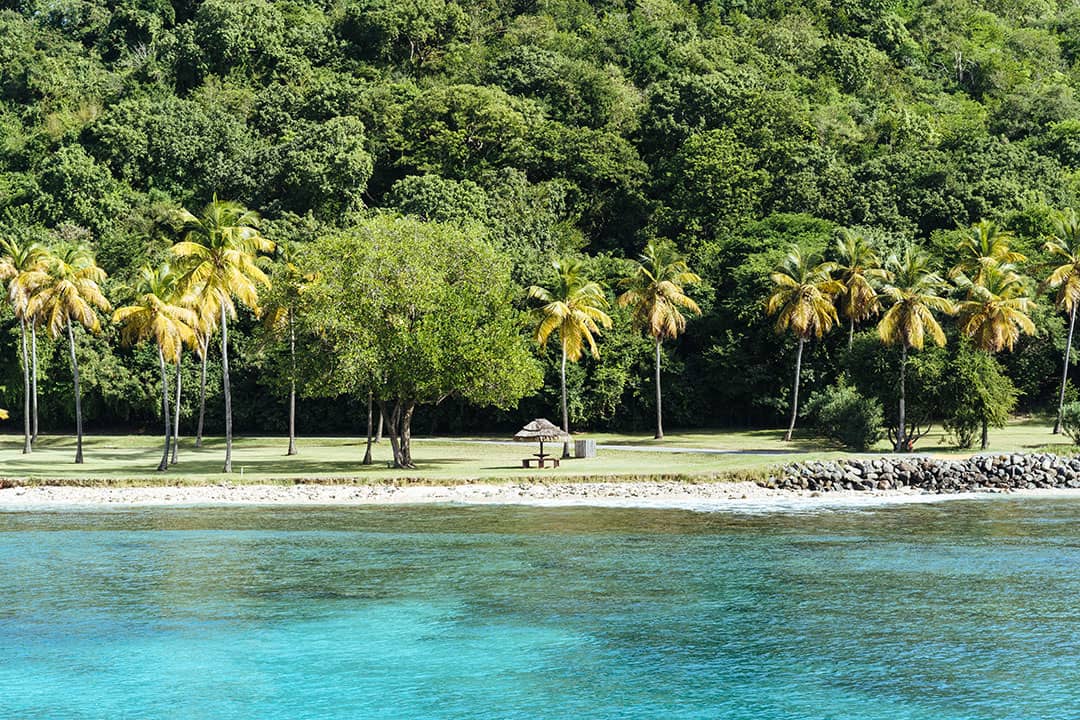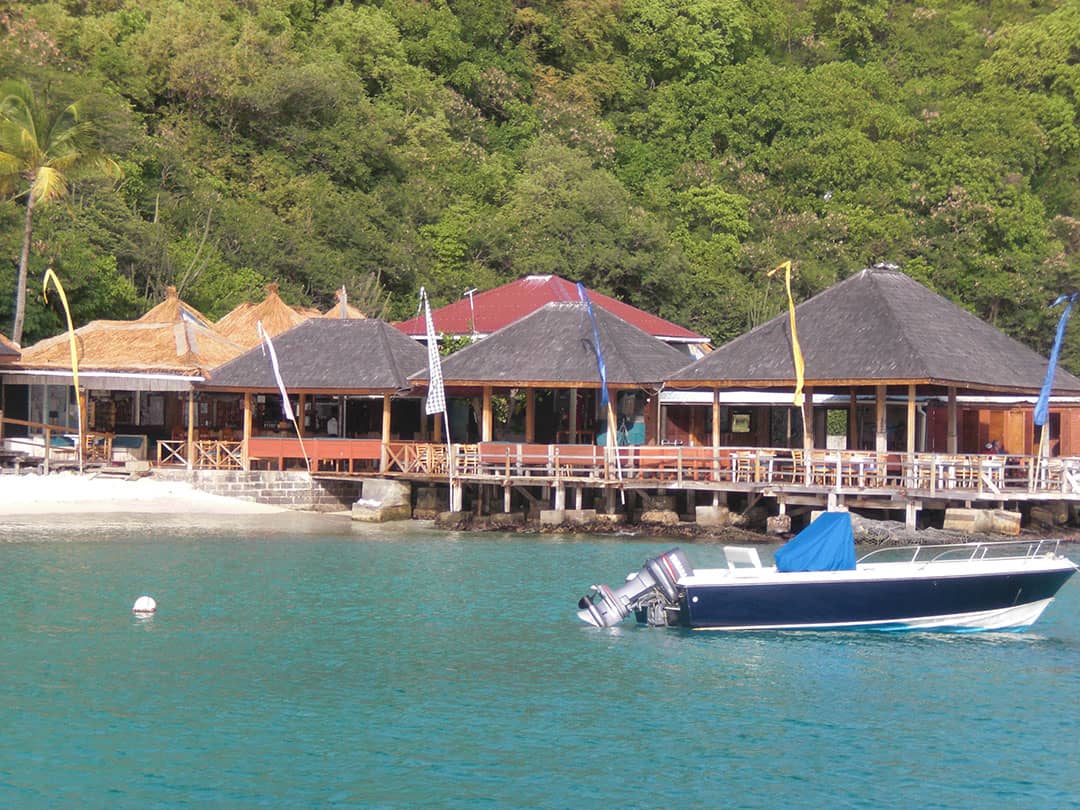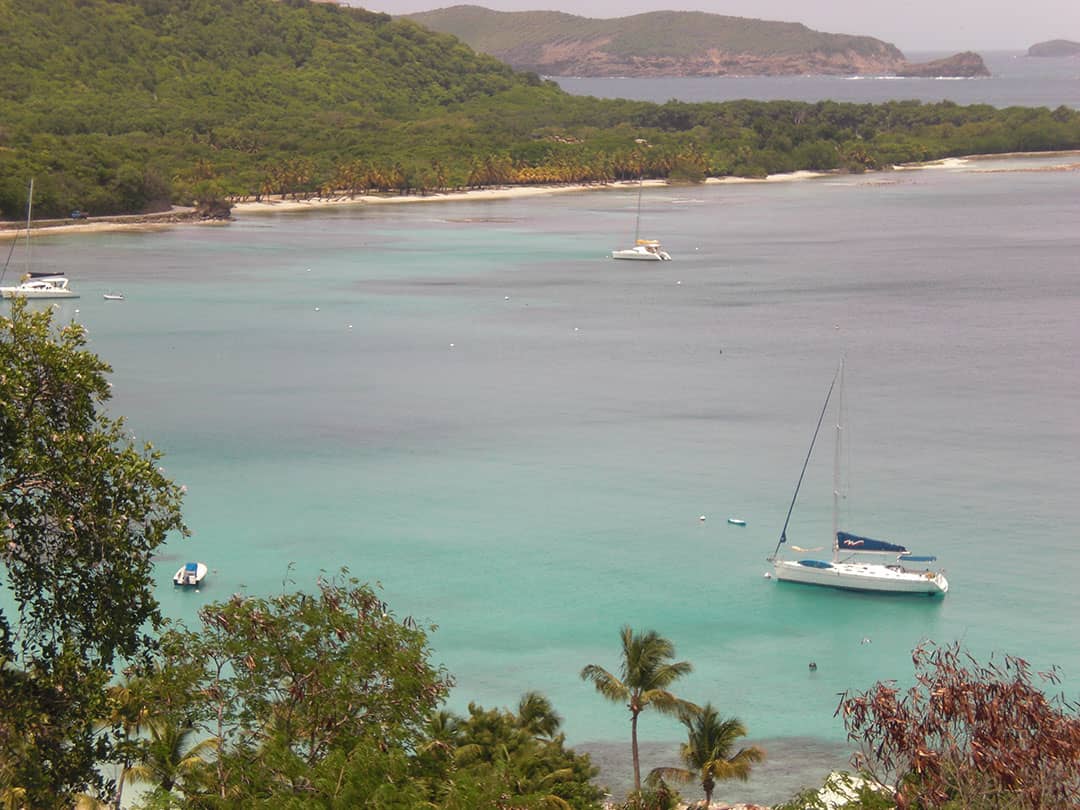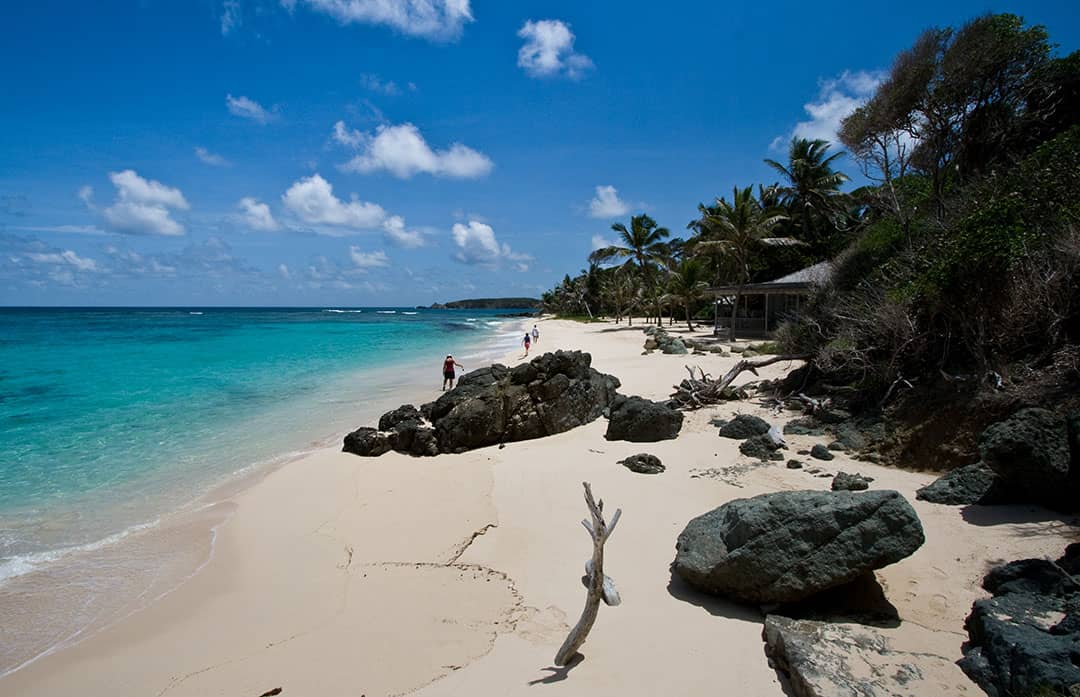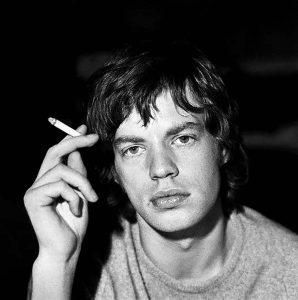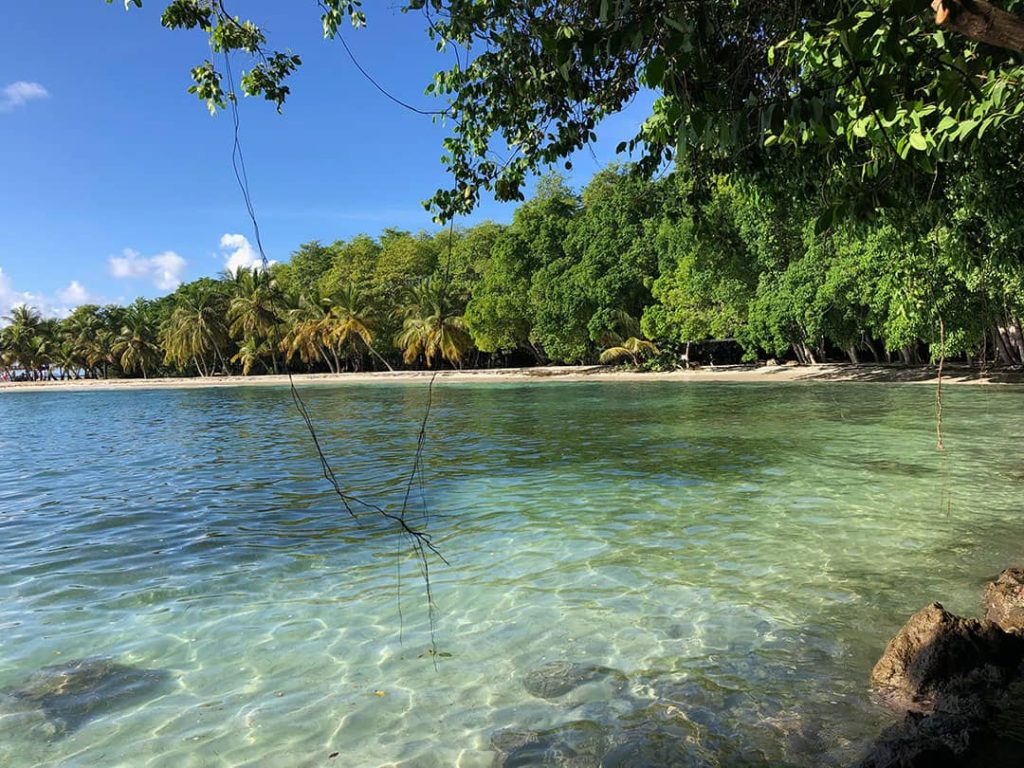
Private island in the Caribbean
Mustique Island
The small island of Mustique is located in the West Indies and is part of the Saint Vincent and the Grenadines archipelago. It has an area of just 2.2 square miles, and is accessible either by air or via a ferry service from the nearby island of St Vincent.
The island is home to a population of just 500, who occupy the few villages situated there. It is collectively managed by The Mustique Company, which is generally made up of the owners of the islands’ residences and villas.
The company itself owns and rents some of the 120 villas that are on the island, along with The Cotton House Hotel, which provides accommodation consisting of seventeen rooms.
The earliest history of the island indicates that it was inhabited by people from South America from around 2,500 BC, the Arawaks from 250 BC to 1000 AD, and the Caribs next. In the later fifteenth century, the island was discovered by Spanish navigators, who named what is now Mustique and the surrounding islands Los Pájaros, meaning ‘the birds’, as a flock of birds is what they looked like to them, scattered across the sea. The island was later used by pirates to conceal their ships and treasure.
In the 1740s, with the demand for sugar growing in Europe, and only a limited supply available from the Canaries and Cyprus, European planters found that they could grow this sought-after commodity in vast amounts on the island, and took it over.
The British seized control of the Grenadines at the end of the Seven Years War against the French in 1763. Sugar continued to be grown there until the 19th century, when sugar-beet began to be farmed across Europe, and this reduced the demand for tropical sugar. The Hazell family took over ownership of the Island in 1835, and used it to farm crops and animals. They also took on the responsibility of maintaining a school for the locals.
The name of the island, Mustique, is derived from the French word for ‘mosquito’, moustique, due to the island being riddled with the insects.
The Hon. Colin Tennant bought the island in 1958 from the Hazell family for a sum of £45,000, and it was this purchase and the personality of Tennant himself that would catapult the small Island of Mustique into the world’s eye.
Tennant’s original ideas for the island were around farming; but later he decided that positioning the island as a secret hideaway and escape for an exclusive crowd would be a much more profitable way forward.
It was a considerable undertaking, since, the island was in a sorry state, made up of scrubland and jungle, and with no water supply. The only remaining building, an old plantation house, was in a state of disrepair. The island would need a complete overhaul for it to be transformed into Tennant’s vision of a desirable place for the elite and wealthy.
Tennant was the perfect man for the job, it seems, with his aristocratic lineage and his friends in high places. He was the nephew of Stephen Tennant (1906 – 1987), one of the Bright Young Things, a nickname given by the press to a group of socialites in London in the 1920s and 1930s. He was also the grandson of Pamela Wyndham, 1871 - 1928, part of the Souls group, which was known for its aristocracy and its intellect. So Colin Tennant had both Bohemia and intelligence in his blood, along with his own natural flair for the eccentric. Tennant was lucky in that his family had also previously been successful in manufacturing chemicals, so money from this business venture was available to him and allowed him to indulge in his creative pursuits. Transforming the island would be one of them.
In 1960, Tennant gifted a plot of land on his exclusive new island to Princess Margaret as a wedding gift. She used the plot to build the villa Les Jolies Eaux, which was finished in 1973, and which she frequented on many occasions over the years to follow. It was in the 1970s that Princess Margaret was known to visit Mustique in the company of her young lover Roddy Llewellyn with whom she enjoyed an 8-year relationship.
In 1964, Tennant developed a new settlement, Lovell Village, as part of his transformation plans. Existing islanders were all given a plot of land in the new settlement, and this is generally where the locals have continued to live. To fix the issue of there being no running water, Tennant built a reservoir and instructed land managers to devise and create the island’s infrastructure.
After Tennant’s original base on the island was burned down, he enlisted the design skills of stage designer Oliver Messel (1904 – 1978) to conjure up a new building for him. Messel went on to design another 15 houses on the island, which set the luxurious tone for which it has since become known.
In 1966, the island was even graced by Queen Elizabeth II when she dropped by on her tour of the West Indies. In true Tennant style, he had ensured that some of locals would be kitted out in clothes taken from his personal collection. They wore dresses and morning coats to greet her as she arrived; and although the island was basic, its desert island charm won over both her and Prince Philip, seeming to offer them a place to escape prying eyes and enjoy the favourable weather. It is no coincidence that the island is also now popular with William and Kate, the Prince and Princess of Wales.
Further development continued; and in 1968, the building and selling of the villas began (this was attractive for the wealthy due to the tax-free status Tennant had been able to put in place). It was at this time that The Mustique Company was formed, with Hugo Money-Coutts taking the helm as manager. The development of the airport followed in 1969. The Cotton House hotel opened in the same year, and modernisation of the island continued through the following decades.
The 1960s set the tone for the island as it is known today; and it has continued to attract a well-heeled but bohemian crowd ever since. Mick and Bianca Jagger were some of Tennant’s most prized guests. They built a house on the north of the island, in a Japanese style, on the edge of the beach. David Bowie followed with Britannia Bay House, a villa with Japanese and Scandinavian influences designed by architect Arne Hasselqvist (1937 – 2001). It featured in Architectural Digest in 1992. Other noted guests include fashion designers Tommy Hilfiger and Tom Ford, musicians Noel and Liam Gallagher of Oasis, actor Johnny Depp, supermodel Kate Moss, and singer/songwriter Paul McCartney.
The exclusivity, strict guest lists and party lifestyle of the island added to its allure. Basil’s Bar was known for continuing to host parties well into the next day following an evening start if the guests were so inclined. Tennant’s ability to create a desirable, over-the-top atmosphere attracted the rich. His lavish 50th birthday celebrations took place over a whole week, and included a beach party with a gold theme to suit his extravagant nature.
Tennant left the island in the mid-1980s following the sale of his remaining shares in The Mustique Company to industrialist Hans Neumann, having previously sold his controlling interest in 1976. Tennant inherited the title of Lord Glenconner in 1983. He died in August 2010, aged 83; but Mustique remains much as it was in his day.
